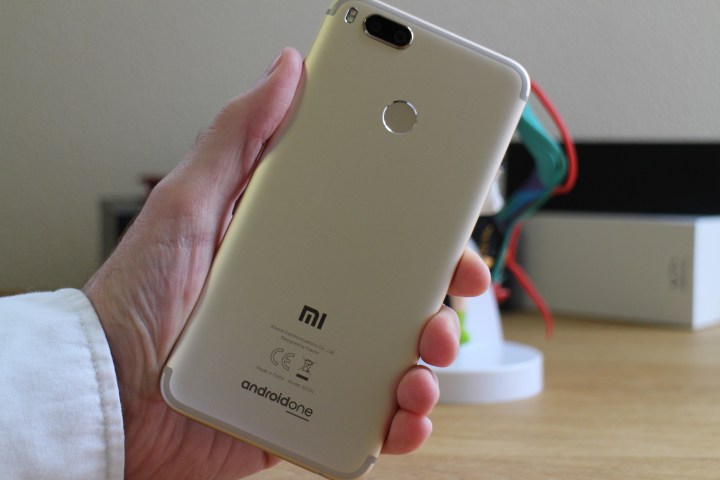
Here’s our guide on how to get the best from the Xiaomi Mi A1’s camera. If you’re looking for a competing phone that may be easy to buy, then make sure you check out the Honor 7X, and also our other recommendations for the best cheap smartphones.
Xiaomi Mi A1 camera specification
Before we get into how to use it, here are the Mi A1’s camera specs. There are two lenses on the back of the Mi A1, both with 12 megapixels. The main wide-angle lens has an f/2.2 aperture and a 1.25 micron pixel size, while the telephoto lens has an f/2.6 aperture and a 1.0 micron pixel size. This enables a 2x optical zoom feature, plus the camera has an HDR mode, and various shooting modes. These include a square cam, tilt-shift, a group selfie, panorama, and a manual mode.
Find the Xiaomi Mi A1’s camera modes

This is easy. Open the camera app and tap the Options button above the shutter release. A new screen will appear with all the available modes. This works in the main camera mode, and in video and selfie mode too. If you want to find options like the Grid, camera sounds, the time stamp, and other options, tap the Gear icon in the top right of the menu screen.
To change to video mode, tap the video icon next to the right of the shutter release button in viewfinder mode, and to get to selfie mode, tap the rotate-like button to the right of the Options button. On the left side of the options button is the filter key. Tap this for a wide array of filters, including an amusing “mosaic” filter that has to be tried on your friends.
In the top right of the viewfinder screen is the HDR button, which is off by default so you’ll have to manually activate it. In selfie mode, this button is replaced by the beauty mode. Tap this and select either Smart or Pro mode. In Smart mode there are three options at the bottom of the screen, adding a Low, Medium, or High level of beautification. Select Pro and you can manually adjust skin tone and facial slimness.
Use portrait mode on the Xiaomi Mi A1

To get the blurred background effect using the Mi A1, you first need to find the right subject. Let’s say you choose a statue, like the example below. Open the camera app and tap the portrait icon at the top center of the viewfinder, assuming the phone is in portrait orientation. This activates the portrait mode, at which time you’ll notice everything is a lot closer up in the viewfinder, due to the phone combining the wide-angle and the telephoto lenses for the shot.

The camera provides some advice on how to set up the picture. For example it will warn you if it’s too dark, or if you need to move further away from your subject. It’s also important to tap on the subject you want in focus, this helps the camera capture the shot you want. Don’t forget, you can use the filters in portrait mode. These can be accessed using the Filter button to the left of the Options button in the center screen.

Wondering how you know when you’ve got the shot exactly right for the bokeh effect? Look for the Depth Effect notification near the shutter release for confirmation. If you’re happy with the framing, then tap the shutter release to take the picture.
Find and edit your pictures
The Xiaomi Mi A1 uses Android One as its operating system, therefore doesn’t have a stand-alone Gallery app, and uses Google Photos instead. Exit the camera app and tap Google Photos. To find all the pictures saved on your phone, tap the Albums option at the bottom of the screen, or browse through the list under the Photos option. You’ll notice pictures taken with portrait mode have a small portrait symbol on the thumbnail.
When you find the picture you’re looking for, tap it. Along the bottom of the screen find the icon that looks like three sliders. Tap it to add filters, change aspects of the photo, crop it, or rotate and straighten the image. If you have installed the Snapseed app, or any other photo editing app, you can quickly access them using the grid icon on the far right.
That’s it, you’re all set to use the Xiaomi Mi A1 camera to the best effect. Enjoy the phone!
Editors' Recommendations
- The best Android tablets in 2024: the 11 best ones you can buy
- Watch out Samsung, Xiaomi’s Mi 10 and Mi 10 Pro have 108MP cameras too







